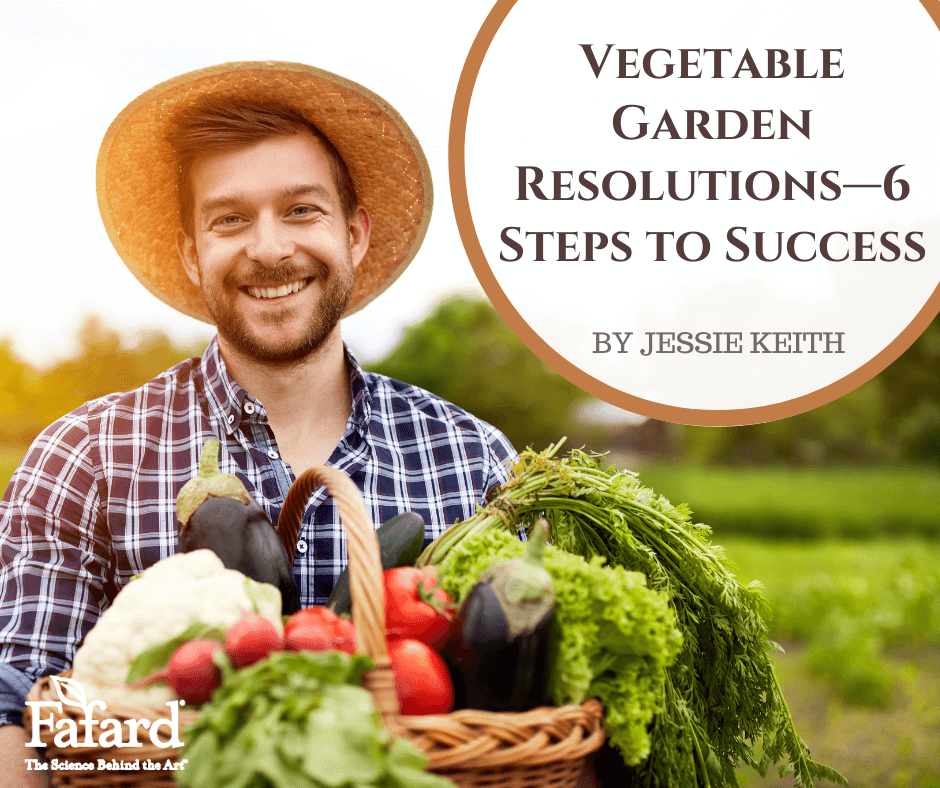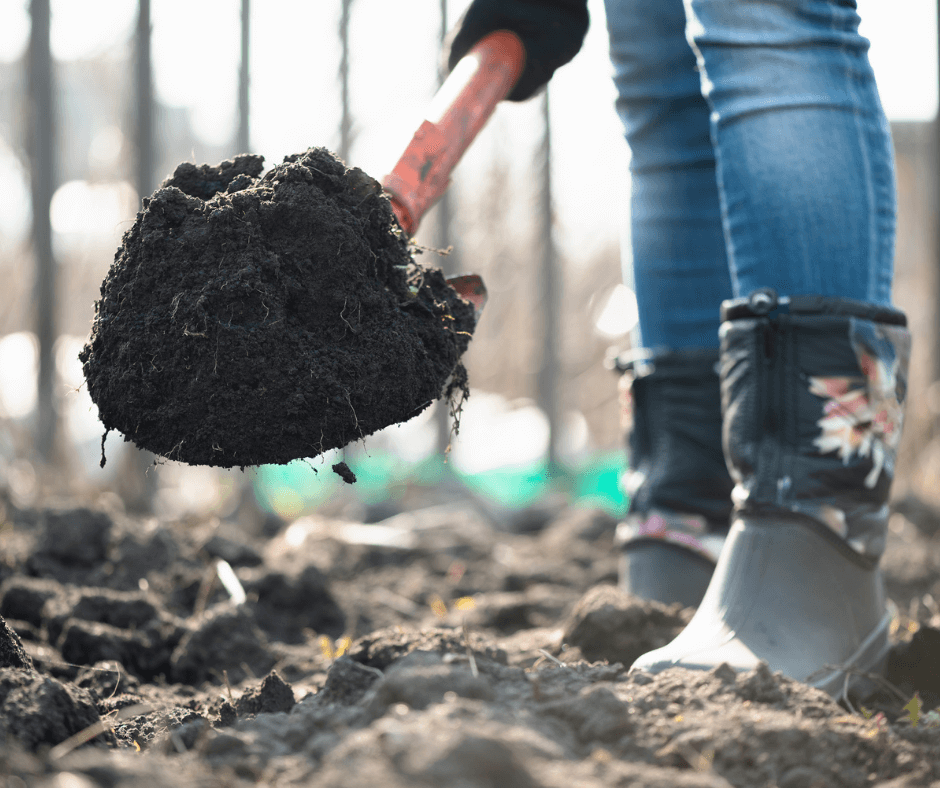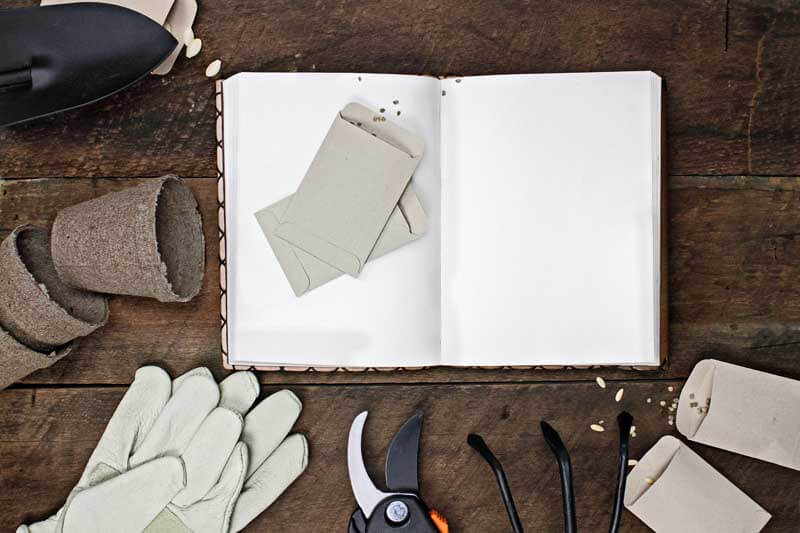
Last year the weeds took over, you didn’t feed or water enough, you didn’t mulch that bed, or you failed to start that new raised bed you’ve been dreaming of for years. Never fear! It’s a New Year! Last year’s vegetable gardening woes can be rectified with good planning and smart garden resolutions. Now’s the time to troubleshoot and plan to make this year’s veggie patch better than ever.
When it comes to smart garden planning and success, experience is everything. Being a part of a large, bountiful community garden for the past 14 years has given me the opportunity to watch new and seasoned gardeners in motion. Not surprisingly, the seasoned gardeners always have well-planned, productive, weed-free plots, while new gardeners haphazardly start their plots in spring and end up with the worst weed patches by midsummer. But some novices return the following year ready to try again. Gardeners committed to success learn to turn their beds around through guidance from the old-timers and pros.
With garden guidance in mind, here are a few pro tricks to add to your vegetable garden resolution list. Commit to these, and you can’t go wrong!
1) Plan

Truly productive beds are planned in advance with the seasons in mind. A good planning strategy starts with knowing when plants bloom and produce, and timing your garden to sequentially bloom and remain productive and pretty through the year, if possible.
It is important to identify cool season and warm season vegetables to correctly plan beds. Knowing the window of productivity and days to harvest (number of days it takes for plants to be harvestable from seed) for a given plant is also essential.
Click here for a table of Cool Season Crops for Spring and Fall and Warm Season Crops for Summer. The basic tables show some of the most common cool-season vegetables, warm-season vegetables, and their average days to harvest. Use this data when plotting spring, summer, and fall vegetable patches. Warm-season vegetables must be planted after the threat of spring frost has passed. To determine your spring and fall frost dates, refer to The Old Farmers Almanac frost dates.
2) Design & Plot
The best vegetable gardens are designed and planned each year to consider space, light, succession cropping, and rotation. Choose a full-sun location, decide what you want to grow, and plot your beds to allow enough space to meet your gardening goals. Investing in raised beds can make the process easier, otherwise, establish your bed lines and pathways and maintain these yearly. (Click here to read more about garden planning and design.)
Next, determine where crops will be planted incrementally in spring, summer, and fall. Designing and planning your garden for the full growing season will help you stay in budget, time seeding and planting (Click here to view Johnny’s Seeds handy seed-starting date calculator.), and plan for harvest, preservation, and storage. When designing your beds, consider the space needed for crops, their overall heights, and include space to add cages and trellises, as needed.
Crop succession is another essential practice. Some crops must be rotated yearly, so consider what crops will succeed the next. For example, tomatoes, peppers, eggplant, and potatoes are heavy feeders that commonly harbor soil-borne pests and diseases, so they must be succeeded by fortifying crops, such as peas or beans, the following year. Legumes, like peas and beans, replenish essential soil nitrogen. (Click here to learn more about vegetable rotation.)
3) Feed Your Soil

Happy plants must have good soil. Organic matter is the number one additive sure to increase crop yields. Fafard Premium Natural & Organic Compost and nitrogen-rich Garden Manure Blend are two top-quality amendments to increase soil quality and improve plant production. The addition of an OMRI Listed all-purpose fertilizer approved for organic gardening will also increase plant vigor, yields, and keep common nutrient deficiencies, such as leaf chlorosis or blossom end rot in peppers and tomatoes, from appearing.
For raised beds, we recommend the addition of OMRI Listed Fafard Natural & Organic Potting Soil, which contains RESiLIENCE, an all-natural, water-soluble silicon additive for plants that encourages better root growth, earlier flowering, increased stem diameter, and longer time before wilting. Mix this soilless medium in with quality topsoil at a 1:3 ratio for reliable vegetable performance.
When calculating amendment needed for a particular area, use the following formula:
Amendment Application Formula
([area to cover] ft2 x [depth in inches desired] x 0.0031 = ___ yd3).
Example: If you wanted to cover a 20 square foot area with 2 inches of compost, the result would be: 20 ft2 x 2 inches of compost x 0.0031 = 2.48 yd3.
4) Manage Weeds

Save yourself major weeding time by applying thick organic mulch for weed control. Compost is a great choice for vegetable garden mulch in addition to seed-free hay, grass clippings, and leaf mulch. Compost should be applied directly around plants while coarser organic mulches are better for walkways and melon and squash beds.
Organic pre-emergents are also recommended to stop weed seeds from sprouting in the first place. Just be sure not to sprinkle them where you plan to directly plant seeds. Corn gluten, the most common natural pre-emergent, works by inhibiting root growth in newly sprouted seeds.
Of course, nothing beats regular hoeing and hand weeding for effective weed control. Monitoring, scratching, and digging weeds weekly are the best ways to keep them in check, and good tools make the job easy.
5) Invest in Good Tools
Good tools are a must for all garden tasks, whether you are weeding, digging, or pruning. Quality tools may cost a bit more up front, but they will last much longer and perform better.
For hand weeding, nothing beats the classic ho-mi (hoe-mee), also called the Korean hand plow or cultivator. This sharp, downward-facing tool can get to the base of a dandelion root in seconds with a quick chop, chop, chop. It also pays to invest in a trusty garden knife (also called a soil knife or Japanese hori-hori). These can cut into the soil to deep roots below and saw through the bases of tough plants. They are even useful for harvesting greens and digging root crops. One side of the knife is sharp for slicing and the other is serrated for sawing. The classic Cobrahead hand weeder and cultivator it also a nice, effective, well-made weeding tool. It has a sharp, curved head for fast digging and hand hoeing.
A heavy-duty hoe is a necessity for larger weeding jobs. The Prohoes by Rogue are great tools that are so well made, they will last for years. And, for digging and planting, a good spade is a must. Of these, the sharp, all-steel King of Spades pro nursery spades is so tough it will last a lifetime.
Most established gardens will tell you that Felco makes the best pruners and loppers on the market. Pruning and harvesting are fast and easy with these sharp, Swiss-made bypass pruners.
Keep your tools clean and sharp for the best performance. A 5-gallon shop bucket filled with moistened sand is recommended for dipping tools in for easy cleaning. Handy garden tool sharpeners are also on the market. At the end of the season, apply mineral oil to clean tools to prevent corrosion.
6) Commit to a Time Schedule

Gardens need committed care. Regular scheduling of tasks is required for gardening success. Plan to harvest, weed, and water at least twice weekly. (Click here for good watering tips!) During hot and dry periods and high-growth windows, plan to add more time to assess water and plant needs. In no time, your schedule will become a habit, your garden will become your passion, and you find yourself there whenever time allows.
One trick to making any garden a pleasurable oasis is to create a spot where you can sit, sip a drink between weeding. Pick up a cheap patio table and chairs, add a sun umbrella, and make space for them in your garden.

Renewed hopes and fresh ideas for the New Year offer new chances to make your garden amazing. In most parts of the country, gardeners have plenty of time to reshape their garden plans and set their resolutions in motion before the weather warms up. So grab your seed catalogs, and get planning. (Click here to get more garden planning tips!)












